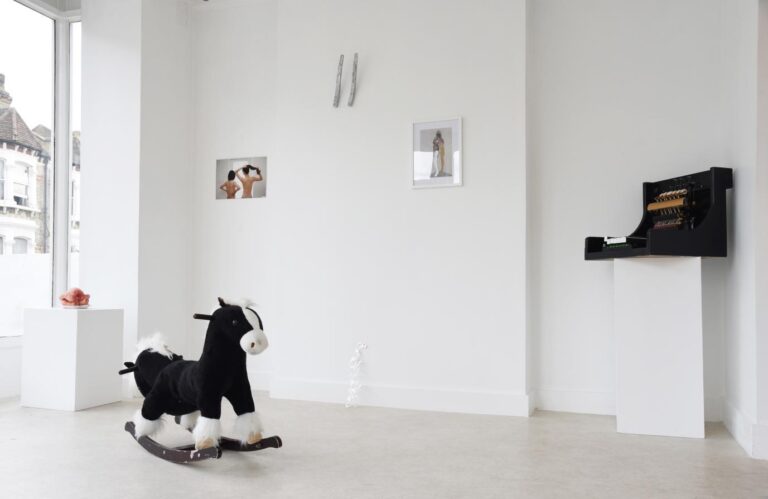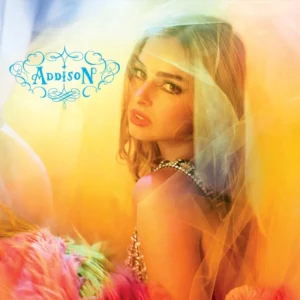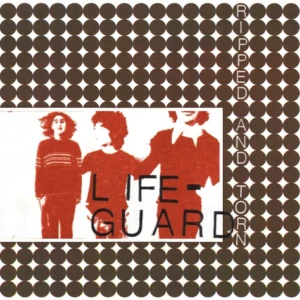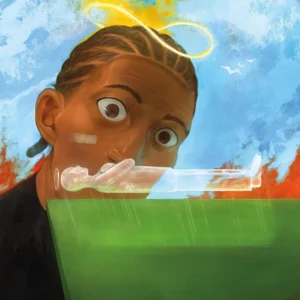From May 27 to June 2, 2025, Blank Canvas Fulham Gallery in London became the site of a radical artistic proposition: Conceptual Erasure, a group exhibition curated by Ciro Wang of ArtOrb and presented by Tablab. Featured works by 19 international artists, the exhibition ventures beyond language and representation to create a space in which perception, rather than meaning, takes center stage.
Conceptual Erasure sets out to open a conceptual gap—an intentional void that invites viewers to rethink the fundamental ways in which we perceive and understand the world. The show suspends the machinery of interpretation to ask: What happens when we erase the concept itself? What kind of art—and what kind of attention—emerges when there is no label to guide the gaze? It is precisely in the cracks, gaps, and dissolution of concepts that the curatorial vision locates the essential power of art—not as an explanation, but as an encounter.
Across moving images, sound, installation, and sculpture, the participating artists attempt to access experiences on the edge of the concept or outside it altogether. Their works do not explain—they unfold. And in doing so, they construct a space where perception is more original, raw, and felt. Through this emphasis on conceptual absence, the exhibition foregrounds what often remains unseen or unspoken—what emerges when we no longer seek to categorize, but simply to witness.

This idea resonates in Mo Cheng’s Strings, an interactive installation that transforms a piano into a metaphorical landscape of emotional tension. Nestled within the familiar frame of the instrument, the work subtly dislocates its function. Here, the piano is no longer a vessel for melody but a living structure that vibrates with the unspoken dynamics of intimacy. As audiences approach and interact with it, Strings reveals not performance, but relation—sound as response, gesture as presence.

This atmosphere of unanchored encounters is vividly embodied in Jialin Wu’s Unfixed Coordinates, a four-channel video installation exploring how identity and memory circulate through cultural artifacts. Wu reframes these historical objects as unstable markers—fluid and shifting, never fixed. The work unfolds like a fragmented map, resisting linear logic and inviting a kind of temporal free fall. Identity here is not a noun, but a verb—a process of repositioning within what echoes.

Ziyan Zhang’s contribution extends this ethos through tactile language. Drawing on the visual traditions of Hmong women, Zhang’s work explores embroidery and batik as narrative structures—tools for archiving cosmogony, migration, and memory where words fail. Through thread and wax, Zhang situates her work at the outer edge of conceptual legibility, allowing what is felt, inherited, or unspoken to surface.
Among the 19 exhibiting artists is Jun Rui Lo, recently shortlisted for New Contemporaries 2025, whose sculptural work contributes to the show’s insistence on material estrangement and perceptual ambiguity. Together, these works don’t aim to be understood in traditional terms. They aim to be experienced—at the edge of language, where awareness and sensation precede thought. The gallery itself, spread across two floors, reinforces this sensory openness. Spatial juxtapositions highlight contrast, echo, and tension without ever collapsing into tidy curatorial messaging.
As a whole, Conceptual Erasure is less an exhibition about something than it is an exhibition that asks us to stop needing to know. In a cultural moment that rewards instant interpretation, it’s a risk—and a necessary one.
Exhibition Details
Dates: May 27 – June 2, 2025
Opening: 8:00 PM, May 27, 2025
Location: Blank Canvas Fulham Gallery, 56 Dawes Rd, London SW6 7EN, UK
Participating Artists:
Beiyi Wang, Chaoming Zheng, Derek Miller, Henryk Terpiłowski, Iris Jingyi Zeng, Jiaqi Liao, Jialin Wu, Jing Zhou, Jingyun Guan, Jun Rui Lo, Lin (Ruki) Li, Lingfei Shen, Mengzhu Li, Mo Cheng, Purva Kundaje, Sofia Sanchez, Xinyue Gao, Zesheng Li, Ziyan Zhang
























 Pulp are back with More, their first album in 24 years. Working with producer James Ford, Jarvis Cocker, drummer Nick Banks, guitarist Mark Webber, and keyboardist Candida Doyle recorded the album in just three weeks at the end of 2024. Though desperation abounds, the record buzzes with romanticism, luxurious production, and Cocker’s typically offbeat humour, as heard in the early singles
Pulp are back with More, their first album in 24 years. Working with producer James Ford, Jarvis Cocker, drummer Nick Banks, guitarist Mark Webber, and keyboardist Candida Doyle recorded the album in just three weeks at the end of 2024. Though desperation abounds, the record buzzes with romanticism, luxurious production, and Cocker’s typically offbeat humour, as heard in the early singles 



 Every single leading up to Addison Rae’s debut album – ‘Diet Pepsi’,
Every single leading up to Addison Rae’s debut album – ‘Diet Pepsi’,  Turnstile return as energized as ever on Never Enough, the follow-up to their 2021 breakthrough Glow On. Ahead of its release, the Baltimore crew previewed the record with the singles
Turnstile return as energized as ever on Never Enough, the follow-up to their 2021 breakthrough Glow On. Ahead of its release, the Baltimore crew previewed the record with the singles  Chicago three-piece Lifeguard have released their debut album,
Chicago three-piece Lifeguard have released their debut album, Little Simz has dropped her sixth studio LP,
Little Simz has dropped her sixth studio LP,  McKinley Dixon’s fifth LP,
McKinley Dixon’s fifth LP, 
